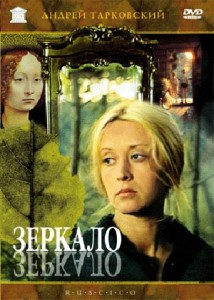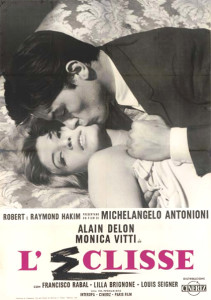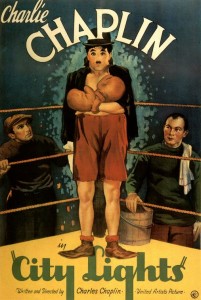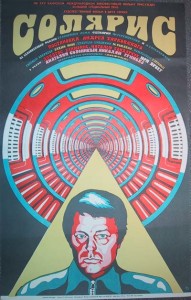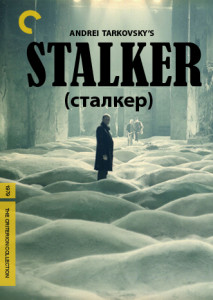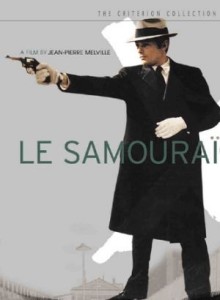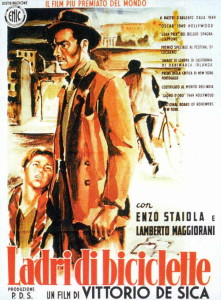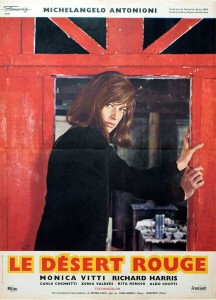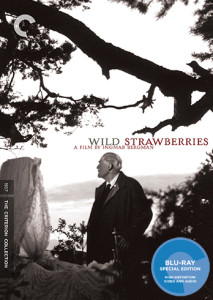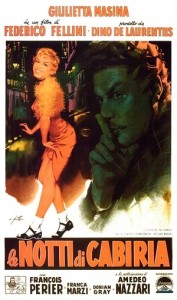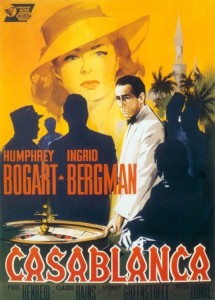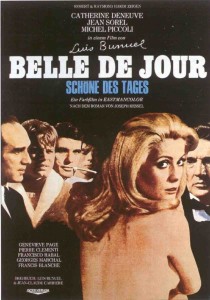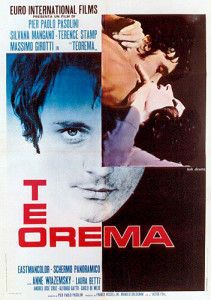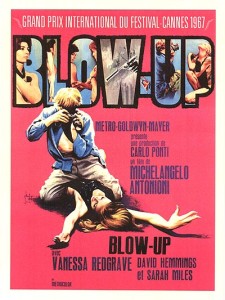The Mirror (1975) by Andrey Tarkovskiy is one of the most poetic films with beautiful cinematography and experimental structure.
The director is known for long takes which create an effect of flowing time.
«„The Mirror“ — is anti petit-bourgeois cinema, and because of that it can not not have a multitude of enemies. „The Mirror“ is religious. And of course incomprehensible to the masses, who are used to flicks and do not know how to read books, listen to music, look at art… The masses do not need art, they need something completely different — entertainment, a leisurely spectacle amid a moralizing „plot“»
–Andrey Tarkovskiy
L’Eclisse (1962) by Michelangelo Antonioni is a black and white masterpiece; its cinematography and symbolism had a profound impact on filmmakers.
The film is about alienation of people in a big city and their inability to connect.
City Lights (1931) Touching and funny movie by the eternal Charlie Chaplin.
The story follows the Tramp who falls in love with a blind woman and his friendship with an alcoholic millionaire.
Solaris (1972) by Andrey Tarkovskiy is perhaps the most humanistic science fiction film.
The film is about a psychologist who travels to a space station of the fictional planet Solaris.
It investigates the problems of human conscience, guilt and the future of humanity.
Stalker (1979) by Andrey Tarkovskiy is a philosophical drama loosely based on a science fiction novel “The Roadside Picnic” by the brothers Strugatsky.
The story is about a man known as the “Stalker” who takes his two clients, to the “Zone”, which is capable of fulfilling peoples deepest wishes.
Visual imagery of the film became iconic for its poetic symbolism.
Le Samouraï (1967) by Jean-Pierre Melville is a film noir classic story of a cold blooded killer whose only friend is a canary bird.
It is unforgettable due to Alain Delon’s acting and impressive camera work.
It is unforgettable due to Alain Delon’s acting and impressive camera work.
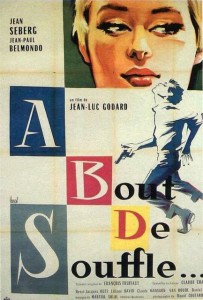
Breathless (1960) by Jean–Luc Godard is perhaps the most famous film of the French New Wave.
The film became famous for the brilliant acting of Jean-Paul Belmondo and Jean Seberg.
Its dialogues and jump cuts influenced the whole development of future cinematography.
Bicycle Thieves (1948) by Vittorio De Sica examines important social problems of post-war Italy.
The film follows the story of a poor father searching for his stolen bicycle, without which he will lose his job.
It is one of the masterpieces of the Italian neorealism and the roles are played by non-actors.
Red Desert (1964) by Michelangelo Antonioni is his first color film.
The film is known for its striking use of color and industrial landscapes.
I want to paint the film as one paints the canvas; I want to invent the colour relationships, and not limit myself to photographing only natural colours.–Michelangelo Antonioni
Wild Strawberries (1957) by Ingmar Bergman is about an elderly man contemplating his past.
The film explores eternal problems of human existence.
It is famous for its cinematography and excellent work of the actors, in particular the final role of actor/director Victor Sjöström.
The Nights of Cabiria (1957) by Federico Fellini is a heart breaking drama about a prostitute in Rome, played by Giuletta Masina, who searches for true love.
It has become one of the most famous films by Fellini.
Casablanca (1942) by Michael Curtiz is a romantic drama set during the World War II.
It features excellent performances by the great actors Humphrey Bogart and Ingrid Bergman.
It is beautifully shot and has a great soundtrack by Max Steiner.
Belle de Jour (1967) by Luis Buñuel is his most successful surrealist drama. Catherine Deneuve plays the part of a housewife who chooses to work as a prostitute to alleviate her boredom while her husband is at work.
Teorema (1968) written and directed by Pier Paolo Pasolini is a symbolical Italian film.
Terence Stamp plays the part of a mysterious Visitor who comes to a bourgeois family and has intercourse with all of its members.
Blow-Up (1966) by Michelangelo Antonioni is a masterpiece about a fashion photographer who thinks that he has captured a crime with his camera.
It captures the Swinging London perfectly and is loosely based on the life of the photographer David Bailey.
The photographer in Blow-Up, who is not a philosopher, wants to see things closer up. But it so happens that, by enlarging too far, the object itself decomposes and disappears. Hence there’s a moment in which we grasp reality, but then the moment passes. This was in part the meaning of Blow-Up.–Michelangelo Antonioni
